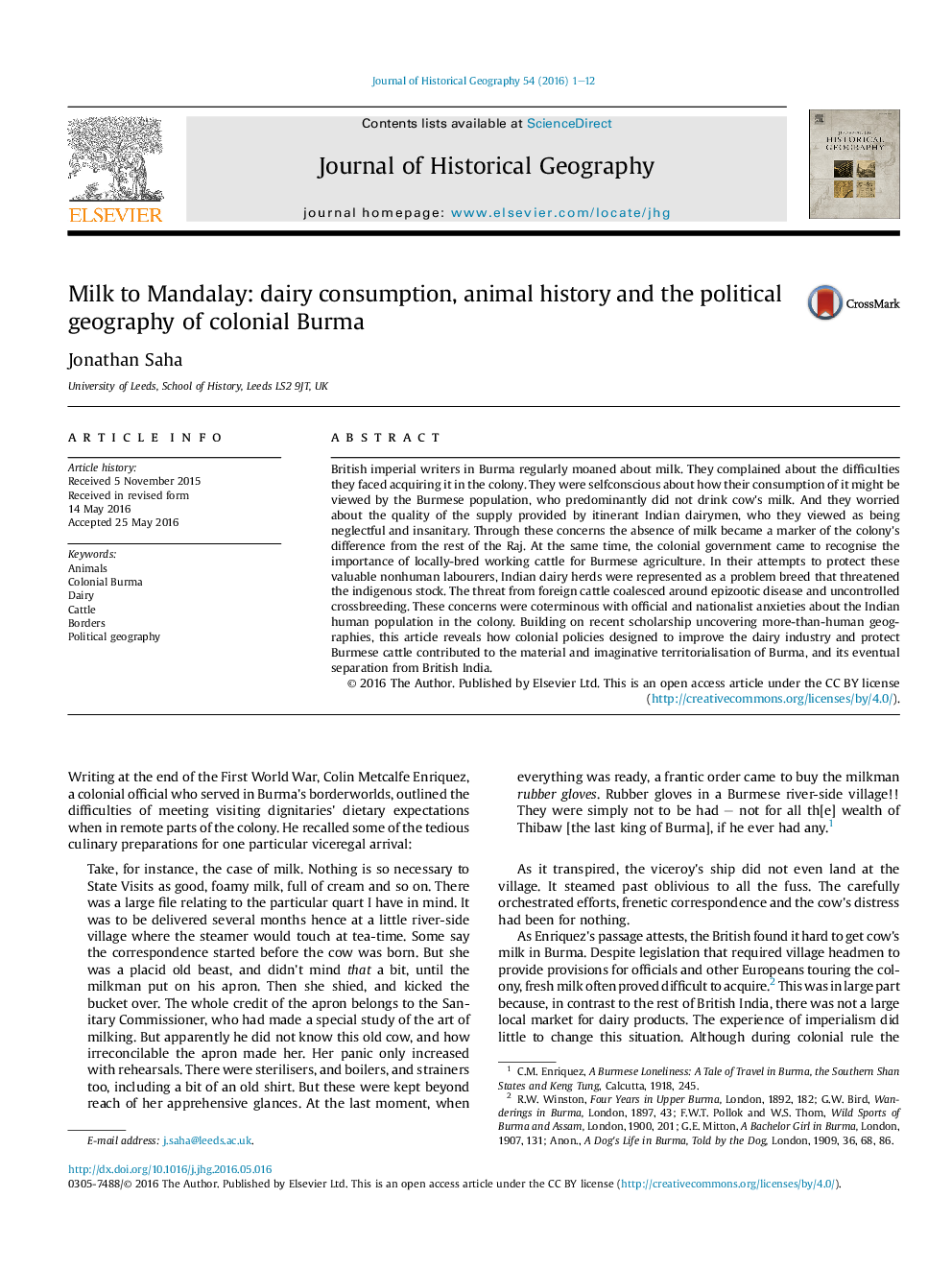| Article ID | Journal | Published Year | Pages | File Type |
|---|---|---|---|---|
| 7447174 | Journal of Historical Geography | 2016 | 12 Pages |
Abstract
British imperial writers in Burma regularly moaned about milk. They complained about the difficulties they faced acquiring it in the colony. They were selfconscious about how their consumption of it might be viewed by the Burmese population, who predominantly did not drink cow's milk. And they worried about the quality of the supply provided by itinerant Indian dairymen, who they viewed as being neglectful and insanitary. Through these concerns the absence of milk became a marker of the colony's difference from the rest of the Raj. At the same time, the colonial government came to recognise the importance of locally-bred working cattle for Burmese agriculture. In their attempts to protect these valuable nonhuman labourers, Indian dairy herds were represented as a problem breed that threatened the indigenous stock. The threat from foreign cattle coalesced around epizootic disease and uncontrolled crossbreeding. These concerns were coterminous with official and nationalist anxieties about the Indian human population in the colony. Building on recent scholarship uncovering more-than-human geographies, this article reveals how colonial policies designed to improve the dairy industry and protect Burmese cattle contributed to the material and imaginative territorialisation of Burma, and its eventual separation from British India.
Related Topics
Social Sciences and Humanities
Arts and Humanities
History
Authors
Jonathan Saha,
